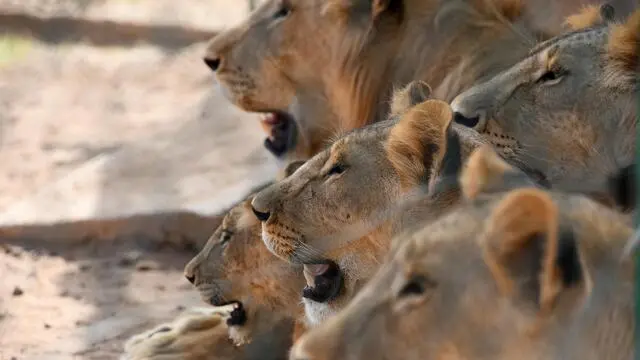Siccità affligge popolazioni leoni del deserto in Namibia

CITTÀ DEL CAPO, 06 MAG - La popolazione di leoni del deserto della Namibia, che popolano l'aspra regione del Kunene, nel nord-ovest del Paese, è diminuita del 21% nell'ultimo anno a causa dell'effetto domino della diminuzione delle prede disponibili provocata dalla siccità. Secondo un'indagine condotta tra la fine del 2022 e l'inizio del 2023 dal Ministero dell'Ambiente, delle Foreste e del Turismo della Namibia (Meft), il numero di leoni del deserto era di circa 57-60 adulti e 14 cuccioli. Le ultime statistiche indicano che 8 -12 leoni contati sono morti, alcuni uccisi dagli abitanti della zona. John Heydinger, ricercatore e co-fondatore di Lion Rangers, un gruppo di conservazione che ha contribuito all'indagine sulla popolazione avverte che la popolazione non è "in caduta libera". Storicamente, i numeri sono stati anche più bassi, ha spiegato Heydinger a Radio France Internationale. La situazione attuale è la conseguenza della diminuzione delle prede tipiche dei leoni a causa della siccità: Negli ultimi 5 anni, il numero di antilopi è diminuito di circa l'85%, quello di zebre e springbok rispettivamente del 59 e del 53%. A causa della scarsità di selvaggina, i leoni hanno preso a cacciare bestiame. Nel periodo 2021-2023, i grandi felini hanno ucciso 512 animali tra cui capre, pecore, bovini, asini e persino polli e cani, secondo i dati raccolti dai Lion Rangers. Si tratta di perdite significative per i pastori delle 19.800 comunità di lingua Otjiherero e Damara che condividono il territorio con i leoni e che a loro volta si difendono: Secondo la legge della Namibia, gli animali selvatici - comprese le specie protette - possono essere uccisi se rappresentano una minaccia immediata alla sicurezza umana o alla proprietà. Le fluttuazioni della popolazione non sono insolite per i leoni del deserto del Kunene: alla fine degli anni '90 se ne contavano appena 20. Il decennio dopo, con piogge eccezionalmente abbondanti, ha incrementato il numero di animali selvatici e la popolazione di leoni è salita a circa 100 o più esemplari.
Riproduzione riservata © Giornale di Brescia
Iscriviti al canale WhatsApp del GdB e resta aggiornato
